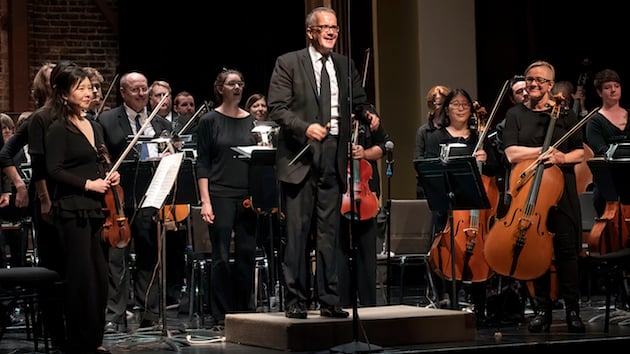
On the Vallejo Symphony website, the call is clear: “Let’s all take care of ourselves and each other.” In early March, the coronavirus impacted Bay Area productions, canceling or postponing them in several counties that had called for sheltering in place before the statewide mandate was imposed. Lost performances mean lost revenue for organizations in one of the most expensive areas in the United States.
As Mary Eichbauer, president of the Vallejo Symphony Association said, “Faced with area-wide concert cancellations, our musicians have suddenly lost their entire incomes for as long as the pandemic lasts.” It makes us ask the question: What will the local arts community look like once COVID-19 has peaked?
Knowing when to cancel or postpone concerts was a bit of a moving target. No one had lived through anything like this before. In early March, Hanneke van Proosdij and David Tayler, co-directors of early music band Voices of Music had kept tabs on colleagues in Italy and could see how bad things were getting there. So, they opted to work remotely starting March 9, and canceled all upcoming performances. The last VOM performance was Feb. 16. “These are tough times to be an arts organization,” said Tayler.
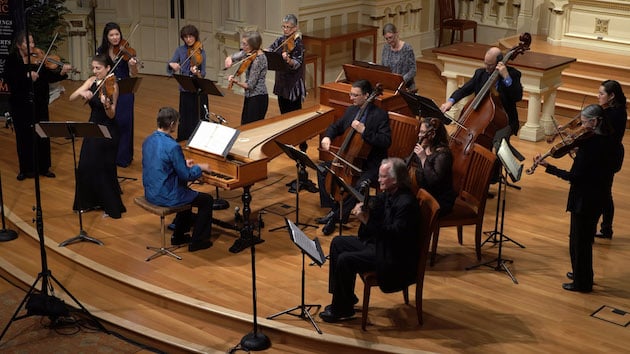
Paul Iannaccone, executive director of the Fremont Symphony met with his board three days after a March 7 fundraiser, calling to move the late March Beethoven performances to Spring 2021. “I struggled over whether that was the right decision,” he says. “Would people say we were overreacting? Then it became illegal to perform.”
In January, Eichbauer visited Europe where she already started seeing concern about coronavirus-19. Before the shelter in place mandate, she met with the Vallejo Symphony board to postpone upcoming concerts to September, saying, “Postponing a month or two wasn’t going to work,”
“The information we had was very alarming,” said Eichbauer. “We needed to protect our community and coming back too soon could make people sick and that wasn’t something we wanted to do.” That erring on the side of caution and concern for performers and patrons came before news accounts like the March 10 choral rehearsal in Washington state where 45 out of 120 attendees contracted COVID-19 and two died.
“You always know a disaster could happen if you run an arts organization,” said Tayler. “We’re always thinking about things that could go wrong. For me, personally, the big shock was, wow, no more concerts until we don’t know [when].”
A Conductor Sheltering in Place — Elsewhere
Vallejo Symphony Music Director Marc Taddei is sheltering in place at home in New Zealand where they’re also under quarantine. With closed borders and travel between states scaled back, future performances are in doubt. “It’s something to think about now, isn’t it,” said Eichbauer. “If the world were in that state where you can’t travel from New Zealand to California, we probably shouldn’t be putting on a concert.”
Eichbauer anticipates that by the start of their next performance cycle in September, everything will have opened up, and she says, “it’s a little bit of planning and a lot of wait and see.” Taddei writes on his website: “Both of my orchestras have rescheduled concerts for later in the year ... I am particularly proud of their actions — supporting our musicians during this uncertain time.”
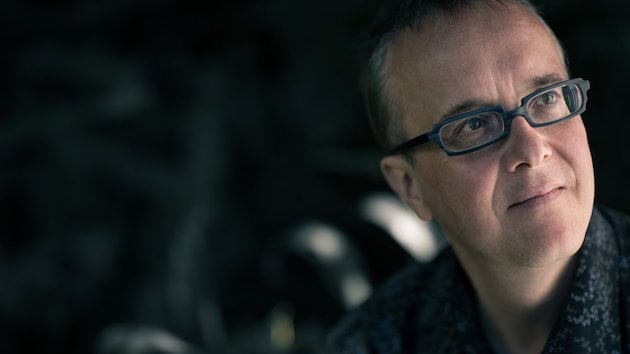
Iannaccone also echoed that sentiment as he considered the likelihood for the Fremont Symphony playing again anytime soon. “By the time it’s safe for a bunch of people to be spitting into their instruments around other people sitting next to them, I think it’s going to be safe for our audiences to attend and our conductors to fly.”
Ticketing Protocols
With concerts canceled or postponed, arts organizations have kept busy connecting with patrons on ticketing. Vallejo Symphony will honor missed April performance tickets at September concerts, and for those who cannot attend the new dates, will grant refunds. Voices of Music encouraged a call to action for ticketholders to consider donating their tickets’ value as a tax deduction to help pay cancellation fees for musicians. Their ticketholders also have the option to exchange for a gift certificate, or finally, to receive a refund.
For Fremont Symphony, tickets and seats for their canceled Beethoven performance are being held for the new dates and a call to contact ticketing with questions. They have not “technically postponed or canceled” their late June concert, but Iannaccone is uncertain it will run, even as the organization is monitoring the status of the virus. There are judgment calls all arts organizations are having to make
Not everything has been canceled. Fremont Symphony website offers what is still within reach: “Hope. Love. Laughter. Music. Kindness. Gratitude. Family. Charitable Acts.”
GoFundMe: Calls for Donations
Glenn Zhu, a Voices of Music patron, created a Facebook fundraiser for the ensemble as a way to try to raise money for their musicians affected by loss of funds from canceled performances. Tayler said with gratitude, “It all leads up to something,” who noted the ensemble was also able to raise 60 to 70 percent of their cancellation fees.
Eichbauer organized a campaign for Vallejo Symphony musicians affected by canceled programming, saying, on the GoFundMe page: “As a struggling nonprofit arts organization, we cannot pay them for concerts that didn’t take place.” She said they called ticketholders informing them of canceled performances and received incredible messages of support with most understanding the postponement.
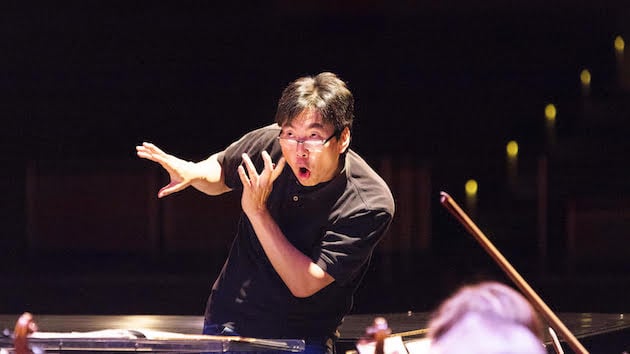
Connecting With Patrons and Creating Innovating Income Streams
On March 28, Voices of Music premiered their hour-long “Leonardo da Vinci: A Musical Odyssey” concert with several of the musicians online for a live Q&A experience with viewers on their popular YouTube channel. One thing van Proosdij and Tayler noticed has changed is how classical-music fans are writing more personal comments. Fábio Lopes, for example, wrote in YouTube, “Your videos have made my quarantine much better! Thanks for making the difference in subscriber’s life.” Likewise, commenter Charles Rae wrote: “My friend told me about this. A fine way to spend a virus afternoon.”
Voices of Music currently draws two million views per month on YouTube, with a free digital library of 370 videos and 160,500 subscribers. “The power of the internet is there for people to use it,” said Tayler, acknowledging that people also have to be careful in how they try to build an audience. He warned against trading so-called subscription-for-subscription schemes with other organizations, which he said can negatively impact success on YouTube. Those deals build view names, but not necessarily additional viewing minutes. Tayler specified that if a YouTube channel has a high subscription rate and low view time, that will impact the channel by Google down-ranking it.
Tayler said he and van Proosdij do presentations for conservatories on how to succeed online, and they have added a line in their YouTube tips: “You should get your views because of content.” He noted online ad revenue is down, and Voices of Music is considering corporate video sponsors but with a caveat: art first. “The corporate thing for us has to be in the background.”
They have moved some of their programs online right now, “that’s definitely a way to get money into the organization,” said van Proosdij. One such offering is a digital docent program where digital elementary and college classrooms can assign a Voices of Music video as homework and then come together with one of the musicians, (a docent) to discuss. It is a paid gig for their musicians, and opportunity for students to deepen their understanding of a musical piece.
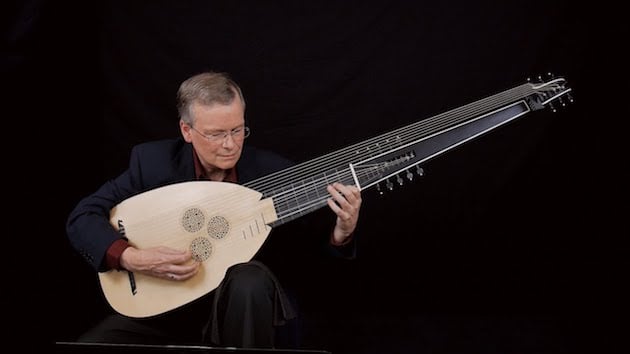
Taking Music to the Patrons
“This is a time to pause,” said Iannaccone, underscoring how important it is right now to reach out to patrons and reconsider the role technology can play. Already, the youth symphony program at Fremont Symphony is using Zoom to practice online. “How do we stay engaged with our audience — how do we meet some of our audience’s needs and desires,” asked Iannaccone. “I have a lot of musicians who are out of work.”
As arts and music organizations come to terms with the world after COVID-19, Iannaccone is trying to think about how programming will need to consider the new reality. He keeps thinking about the grandmother test: “If I have an 85-year-old grandmother, when am I going to feel comfortable with her rubbing shoulders with 400 people if she’s at risk?” It is a good test for Fremont Symphony as one of their sponsors is Acacia Creek Retirement Community where about 20 percent of their residents are also Symphony subscribers and in one of the highest risk COVID-19 groups.
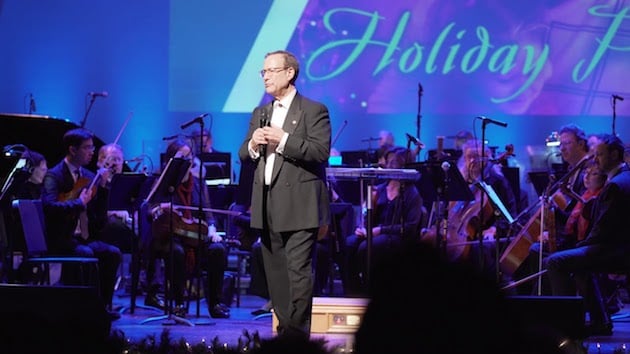
“There will still be populations where it would be dangerous or impractical to attend,” said Iannaccone thinking ahead once the shelter in place mandate starts to slowly lift. He casts a long glance to the future, dreaming aloud at perhaps offering livestreams or Facebook Live performances like the one pianist Charlie Albright offered on his Facebook page, March 27, of Beethoven’s Concerto No. 3, on one of the dates of the now postponed Beethoven performances. Iannaccone is also open to the idea of master classes bringing a few principal musicians to small gatherings. “None of this fits the model we currently have,” said Iannaccone. He also acknowledges that perhaps the model they have needs to shift: “For people who are homebound and could never have made it to the theater, maybe that is an add-on value we should have been doing all along?”
He and Music Director Jung-Ho Pak have begun thinking through contingencies. Pak isn’t new to livestreaming. He also conducts for Cape Symphony in Cape Cod, which has, for the past several years, livestreamed to people in hospice. Iannaccone is thinking about how technology might be integrated into current and future programming. “Despite what’s pushing us to do it, this could be a critical moment for our artform to progress and adapt in ways we weren’t and should have all along.”
The Show Must Go On: What’s Next?
“None of us have a magic wand. When will it be safe to start performing again?” asked Iannaccone — a question all arts organizations must be asking now. “How do you sell the future from a practical marketing stand point?” He is eager to build relationships with other arts organizations and share their programming with Fremont Symphony subscribers. How to do it? Iannaccone said, “the airlines make it work, maybe this is our turn.”
“People are in a holding pattern right now, but they still have that same good feeling about Vallejo Symphony and we are ready to continue when this crisis is over,” said Eichbauer. Vallejo Symphony is hoping to announce the new season on May 1 and start opening subscriptions, believing many patrons will renew their seats. “I think we will be okay,” said Eichbauer. No one knows if the coronavirus will return, but its effects will last beyond the current shelter in place. Eichbauer suggested they may do more virtual meetings in the future and will continue to update their strategic plan with the overall goal of protecting musicians and patrons. “We’re only as okay as our patrons are,” said Eichbauer. “That’s what makes any orchestra live.”
“I think we all feel more fragile than we did. This was a reminder to everyone that things can change in an instant,” said Eichbauer. “The world that we take for granted is fragile.”
Van Proosdij acknowledged it’s still too early for a response with different models of how this might play out. Voices of Music has enough video in the bank to put out a new video each week for the next three to four years. Content is not a problem. “Whether the money is going to run out — I hope not,” said Tayler. He anticipates seeing more solo pieces and perhaps immunity ensembles, made up of people infected with the coronavirus who have built up immunity to it. They are exploring outfitting their musicians with cameras and walking them through how to record home performances, still in nascent stages as is their digital docent program. “What we really want is to go back to our regularly scheduled programming. Before any of that, we want all our musicians to be safe,” said Tayler.
“You can’t wear a mask when you’re playing a wind instrument.,” said Iannaccone, describing the practical struggle for musicians and then the struggle of funding but with a hopeful belief that funders will step up and fill the gap. “Art will survive this.”




